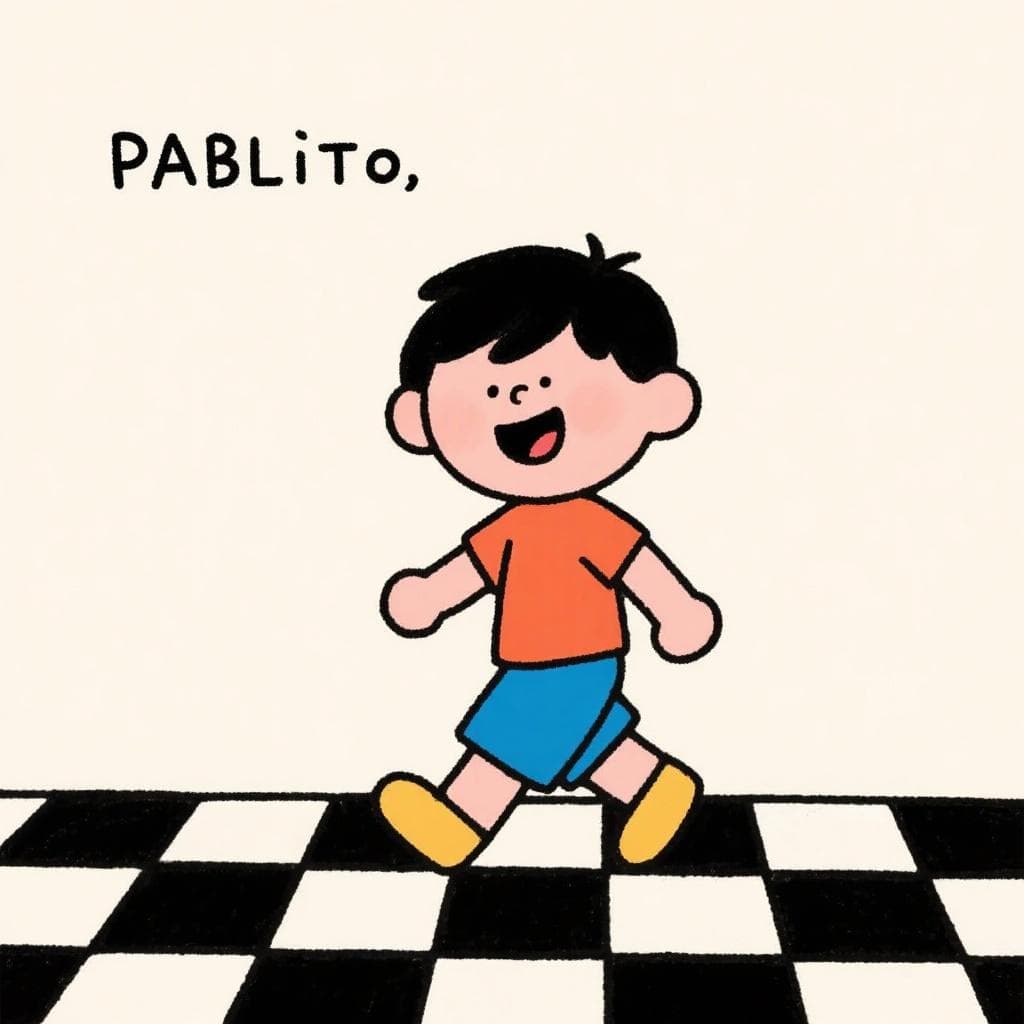Pablito piso el piso, pisando el piso Pablito.
pa-BLI-to PI-so el PI-so, pi-SAN-do el PI-so pa-BLI-to
Pablito stepped on the floor, stepping on the floor, Pablito.
🔊 Listen & Practice
Start with slow speed to master pronunciation, then gradually increase to challenge yourself.
🎨 Visualization

Pablito is stepping on the floor! This one is all about rhythm and repetition.
🎯 Pronunciation Focus
The Unaspirated 'p' Sound
/p/The Spanish 'p' is soft and has no puff of air, unlike the English 'p' in 'park'. To practice, hold your hand in front of your mouth when you say 'piso'—you shouldn't feel a strong burst of air.
The Crisp 's' Sound
/s/This tongue twister repeats the 's' sound many times. The challenge is to keep each 's' clear and sharp, preventing it from slurring into the vowels around it, especially as you speed up.
Linking Vowels (Sinalefa)
N/AListen to how 'piso el' flows together to sound like one smooth word ('pi-swel'). This natural linking of words is essential for Spanish fluency and rhythm.
📝 Practice Breakdown
Start with the first half. Focus on making that 'p' sound soft, with no puff of air. Try to connect 'piso el' into one fluid sound.
Now for the second half. The sounds are the same, so concentrate on maintaining a steady rhythm. Keep the 's' in 'pisando' nice and crisp.
Key Words in This Tongue Twister:
📚 Background
This is a classic 'trabalenguas' that Spanish-speaking kids learn to master basic sounds and rhythm. Its simplicity makes it a perfect starting point for learners of any age to work on the 'p' and 's' sounds.
❌ Common Pitfalls
Puffing the 'P' (The English Way)
Mistake: "Pronouncing the 'p' in 'Pablito' or 'piso' with a strong burst of air, like you would in the English word 'Paul'."
Correction: The Spanish 'p' is much softer. Simply bring your lips together and release the sound without any extra air. To check, hold a tissue in front of your mouth. It should barely move when you say 'piso' correctly.
Slurring the 'S' Sounds
Mistake: "When speeding up, the phrase 'piso el piso' can start to sound like one long, hissing 'pisssso'."
Correction: Practice slowly first, making sure each 's' is a distinct sound: 'pi-so... el... pi-so'. This builds the muscle memory you need to keep the sounds separate and clear, even when you say it fast.
🌎 Where It's Used
General Spanish
This tongue twister is universally known and used across the entire Spanish-speaking world as a fundamental exercise for children and learners.
🔗 Related Tongue Twisters
The Pablito Pace Challenge
Start slow, then try to say it three times in a row, getting a little faster each time. Can you say it without any English-style 'p' puffs?
🏷️ Tags
Frequently Asked Questions
Why is the 'p' sound different in Spanish?
Languages just have different rules for sounds! In English, sounds like 'p', 't', and 'k' are often 'aspirated' (have a puff of air) at the beginning of words. In Spanish, they are 'unaspirated' (no puff of air), which gives the language a smoother, more flowing sound.
Is 'Pablito' a common name?
Yes! 'Pablito' is a common and affectionate diminutive for the name 'Pablo,' similar to calling someone named 'Robert' 'Bobby' in English.
